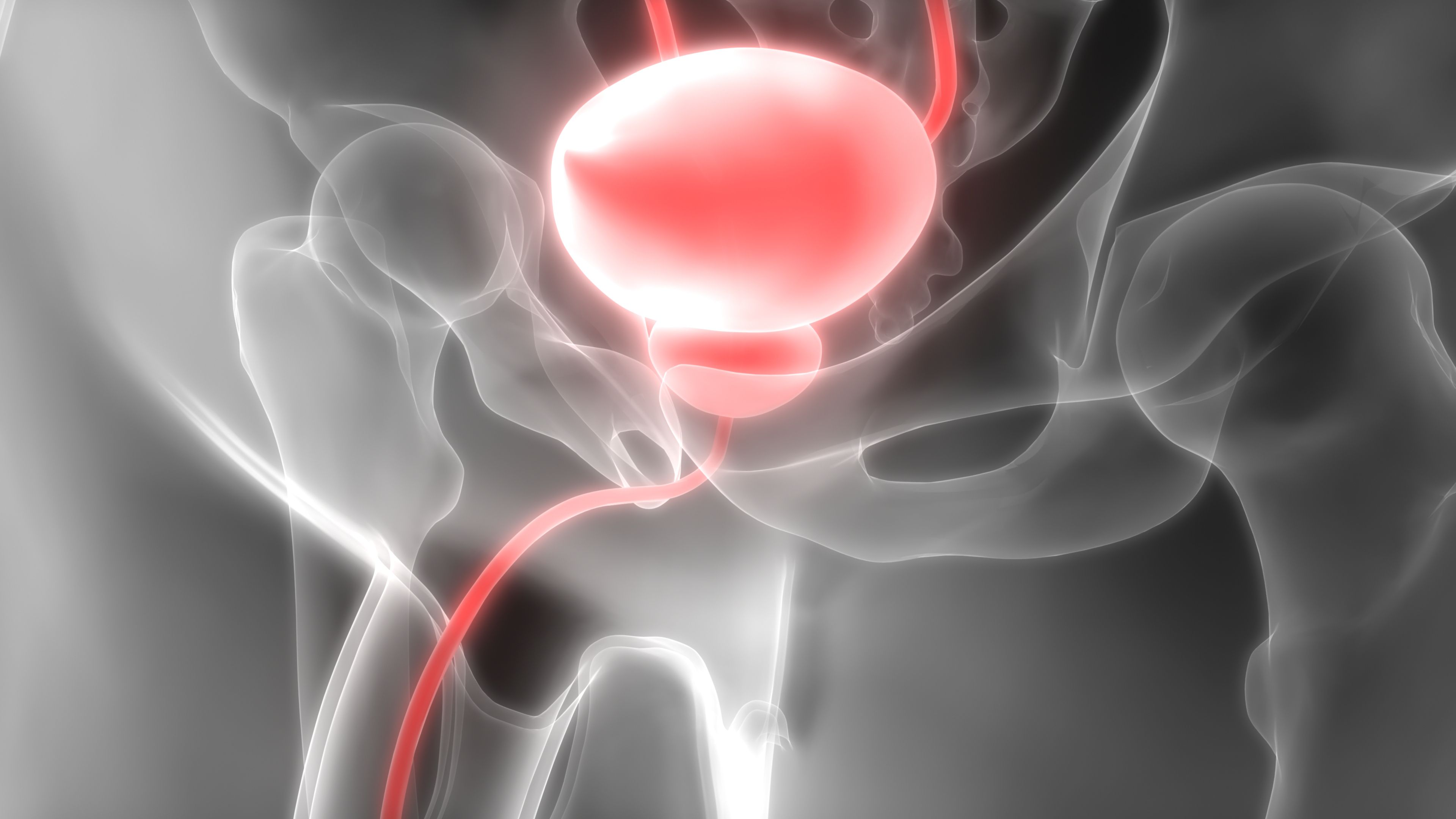MAGNITUDE Study of Niraparib/Abiraterone/Prednisone Shows Promise in mCRPC
Findings from the second interim analysis of the phase 3 MAGNITUDE study showed the positive benefit of niraparib plus abiraterone and prednisone in metastatic castration-resistant prostate cancer.

Treatment with niraparib (Zejula) in additon to abiraterone and prednisone led to prolonged survival, an extended time to cytotoxic chemotherapy (TCC), and delayed progression in patients with metastatic, castration-resistant prostate cancer (mCRPC) and homologous recombination repair (HRR) gene alterations.
Findings come from the second interim analysis of the phase 3 MAGNITUDE study (NCT03748641) which was presented at the 2023 Genitourinary Cancers Symposium.
"…the MAGNITUDE trial confirms the benefit of the niraparib plus abiraterone combination, with a 45% reduction in the risk of progression or death and an extension of median rPFS to more than 1.5 years…compared with placebo plus abiraterone," according to an expert from Houston Methodist Cancer Center in Texas.
After an additional 8 months of follow-up since the previous interim analysis, the median radiographic progression-free survival (rPFS) was 16.7 months in the niraparib group vs 13.7 months in the placebo arm (HR, 0.76; 95% CI, 0.60-0.97; nominal P = .0280).
Niraparib also yielded a statistically significant benefit in time to symptomatic progression (TSP) vs placebo, with a hazard ratio of 0.60 (95% CI, 0.42-0.84; P = .0029), as well as in TCC, with a hazard ratio of 0.67 (95% CI, 0.47-0.94; P = .0206).
Notably, among patients with BRCA alterations, the median rPFS was 19.5 months and 10.9 months in the niraparib and placebo arms (HR, 0.55; 95% CI, 0.39-0.78; nominal P = .0007), respectively. TSP progression in the BRCA subgroup was not evaluable (NE) in the niraparib arm vs 23.6 months in the placebo (HR, 0.54; 95% CI, 0.35-0.85; P = .0071). Additionally, the TCC in the BRCA subgroup was NE in the niraparib arm and had a median of 27.3 months in the placebo arm (HR, 0.56; 95% CI, 0.35-0.90; P = .0152), respectively.
Overall survival showed an uptick in the BRCA subgroup, with a median of 29.3 months in the niraparib arm vs 28.6 months in the placebo arm (HR, 0.88; 95% CI, 0.58-1.34; P = .5505).
Niraparib treatment also resulted in a delayed time to worst pain intensity (HR, 0.70; 95% CI, 0.44-1.12; nominal P = .1338) and pain interference (HR, 0.67; 95% CI, 0.40-1.12; nominal P = .1275) in the BRCA subgroup vs placebo.
“We all acknowledge that patients with metastatic CRPC and HRR alterations, especially BRCA [alterations], have a grim prognosis,” presenting author Eleni Efstathiou, MD, PhD, medical oncologist, and section chief of Genitourinary Medical Oncology at Houston Methodist Cancer Center in Texas, said during the presentation. “Here, with a longer median follow-up…the MAGNITUDE trial confirms the benefit of the niraparib plus abiraterone combination, with a 45% reduction in the risk of progression or death and an extension of median rPFS to more than 1.5 years…compared with placebo plus abiraterone.”
The HRR-positive cohort of the randomized, double-blind MAGNITUDE study enrolled 423 eligible patients, with 212 receiving niraparib and 211 receiving placebo. Treatment consisted of either niraparib at 200 mg daily plus the standard abiraterone dose at 1g daily plus prednisone at 10 mg daily or the same matched regimen with placebo.
Patients in both the niraparib and placebo groups had a median age of 69 years old. Most patients in both groups had BRCA1/2 alterations (53.3% vs 53.1%) and bone metastases (86.3% vs 80.6%), whereas a minority had some prior taxane-based chemotherapy (19.3% vs 20.9%) or some prior abiraterone treatment (23.6% vs 22.7%). The niraparib group had a slightly higher proportion of patients with visceral metastases (24.1%) vs the placebo group (18.5%).
“The MAGNITUDE patient population is representative of what we see in our daily practice,” Efstathiou said. “[Patients] were even allowed to [have initiated] abiraterone [treatment] up to 4 months prior to enrollment.”
Median follow-up at the time of this analysis was 26.8 months, and median treatment durations were 17.9 months with niraparib and 15.2 months with placebo. A greater proportion of patients in the niraparib group (34.9%) remain on therapy vs the placebo group (27.0%).
The toxicity profile was consistent with the first interim analysis, and no new safety signals were observed. Adverse effects (AEs) were generally more common among patients treated with niraparib. The most frequent AEs in the niraparib and placebo groups were anemia (50.0% vs 22.7%), hypertension (33.0% vs 22.3%), and constipation (33.0% vs 15.6%).
“These results continue to support genomic testing in metastatic CRPC, as well as the use of niraparib plus abiraterone in [patients with] HRR-positive metastatic CRPC, particularly those harboring BRCA gene alterations,” Efstathiou concluded.